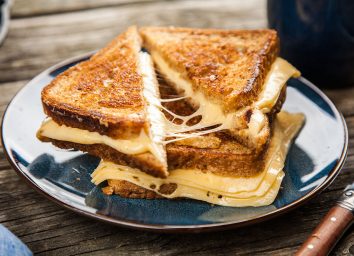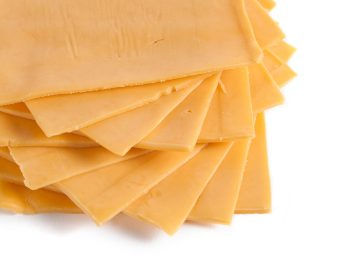We Tried 5 American Cheese Brands & This Is the Best
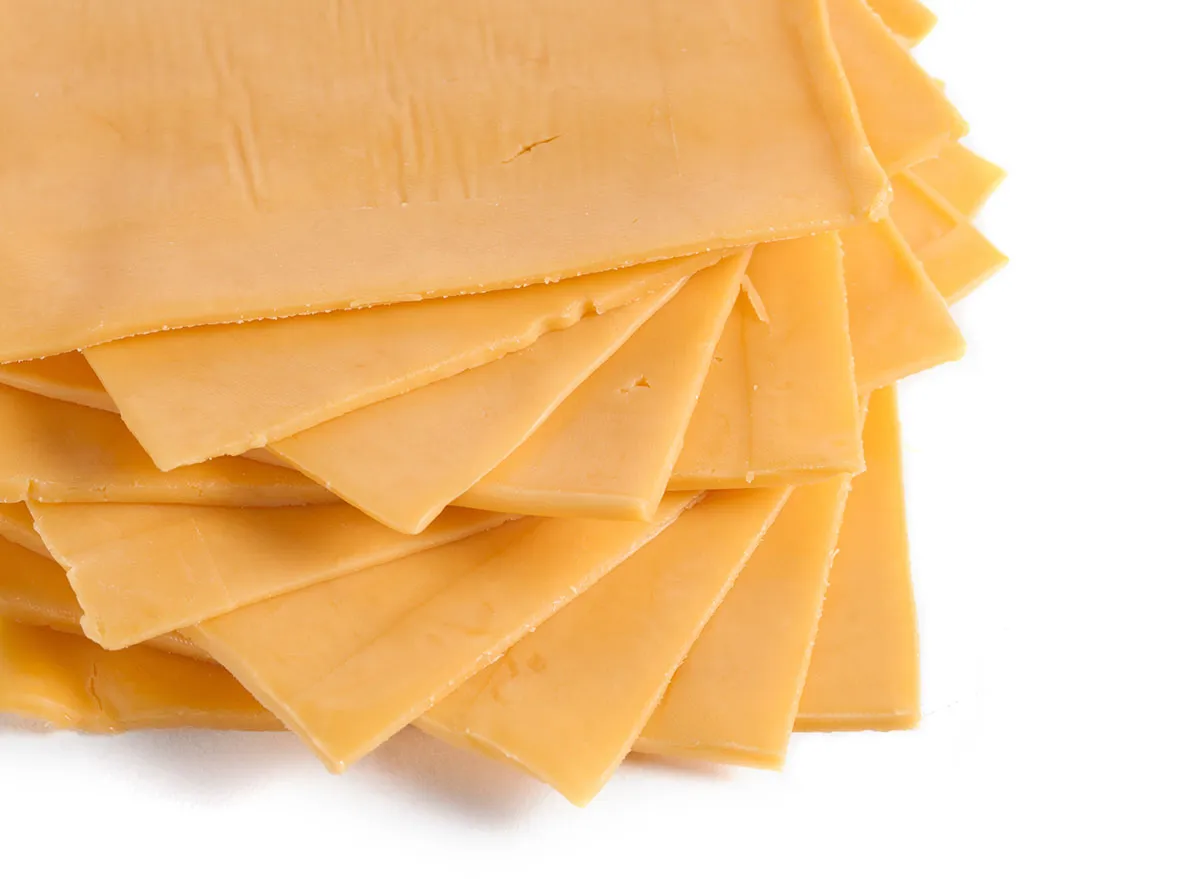
I’m a food writer and I have a confession: I love American cheese. And I’m not talking about American Originals like Monterey Jack, Colby, Muenster, or the like. I’m talking about the quick-to-flop pale orange individual slices of waxy “cheese product” that come in wrapped in thin clear plastic. The ones that last forever in your fridge deli drawer that you maybe sneak-eat cold as you melt another one between buttered bread for a midnight grilled cheese. Yeah. That one.
I know I’m not alone! But haters will often argue that it’s a processed material. But technically, all cheese is processed. Cheese is a man-made food that requires human ingenuity in order to exist. Whether that means treating milk with rennet to create curds, kneading and stretching, pressing, brining, fermenting, heating, or other meddling, cheese isn’t an ingredient that just happens organically.
Then there’s the argument that this supposedly lowbrow stuff isn’t even real cheese. Pasteurized Process American Slices sure aren’t cheese; they’re made with cheap oil and not milk. This is the junk that gave American cheese a bad rap.
I’ll admit, in many cases, American cheese can’t be legally marketed as cheese, even though it’s made by a Swiss process of blending and melting down “real” cheeses like cheddar or Colby. But this is only because there are additives in its composition that can include whey, milk protein, and emulsifying salts. It’s these mostly natural ingredients that give American cheese the qualities that make it so special.
At the end of this process, though you end up with two types of American cheese: pasteurized process cheese food—the individually wrapped singles you probably grew up with—and pasteurized process cheese, which you’d get sliced at the deli counter. This off-the-block American needs to have no more than 43% moisture and at least 47% fat. The packaged ones have a few more additives and are permitted to be lower in fat. However, they must be at least 51% straight-up cheese. And these are what we’re looking at today. Read on to see how we ranked them. Plus, check out We Tried 6 Store-Bought Rotisserie Chickens & This Is the Best.
(Plus, always be sure to skip the 8 Worst Fast-Food Burgers to Stay Away From Right Now.)
How we graded them.

We tested these American cheese . . . er, foods two ways: As a cold slice by itself to assess its truest flavor and melted over microwaved bagged broccoli.
Why broccoli?
First of all, because it’s delicious and nutritious! But for scientific reasons, because simultaneous steam melting is a fairer gauge for a test than a grilled cheese, which offers extended exposure to higher heat. This would give some cheeses an unfair advantage and a false sense of how much heat and time they really need to melt down. Furthermore, steaming American cheese is a good way to encourage the water to separate from the singles, which helps determine which ones retain a richer flavor in their melted state. Lastly, we microwaved the whole thing to see how the cheese would melt or react over time and concentration.
Without further ado, here are American cheese slices, ranked from the just OK to the best option.
Horizon Organic American Singles
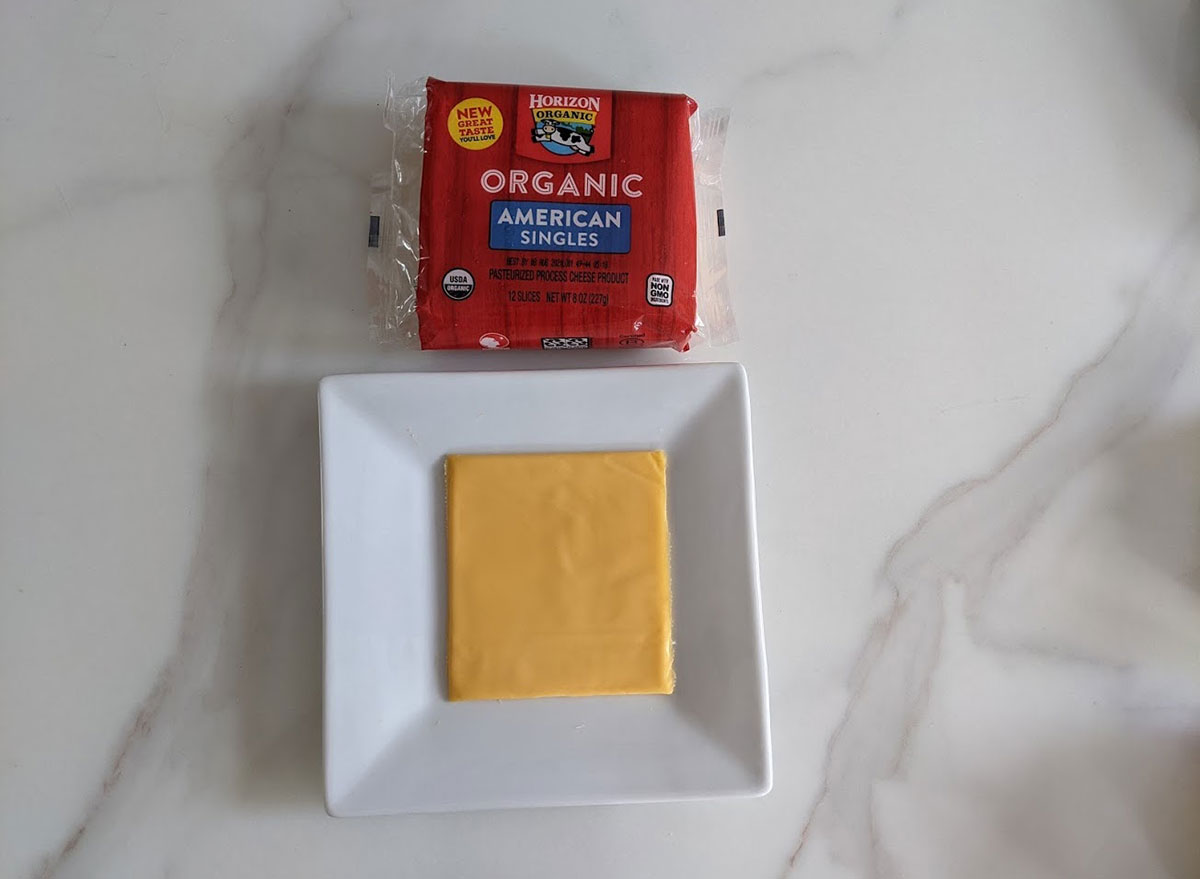
I always want to like the organic, “better quality” option in these taste tests—not to validate my own palate, but because I want so badly for food manufacturer marketing to live up to its advertised promises. I want to not feel bamboozled by health halos and instead, be delighted by a real one. So my expectations for Horizon Organic—one of the leaders in pioneering organic dairy, a partner in the creation of the USDA’s national program—were high.
Unfortunately, they did not meet them, no thanks to a new recipe released just earlier this year. And apparently, I wasn’t the only one let down—it earned less than 1.5 stars on their own website by users begging for the old recipe back.
Cold, this is a harder, stiffer cheese than its competitors. It bites like a thin-sliced cheddar, but without the sharp, distinctive flavor—or much flavor at all, really. It had barely any salt, but then left a vaguely milky aftertaste that wasn’t there while you were powering through the dry bite. This was also the poorest melter of the batch. When left to do so on its own, it ended with a chalky granularity akin to shredded cheeses cut with too much dehydrating cellulose. It was stubbornly slow to melt until nuked too, which revealed some creaminess and mildly warm flavor. But like a carrot on a stick, this pleasure was quickly taken away as it cooled quickly, drying out fast into a waxy coat far from ideal.
Borden American Singles
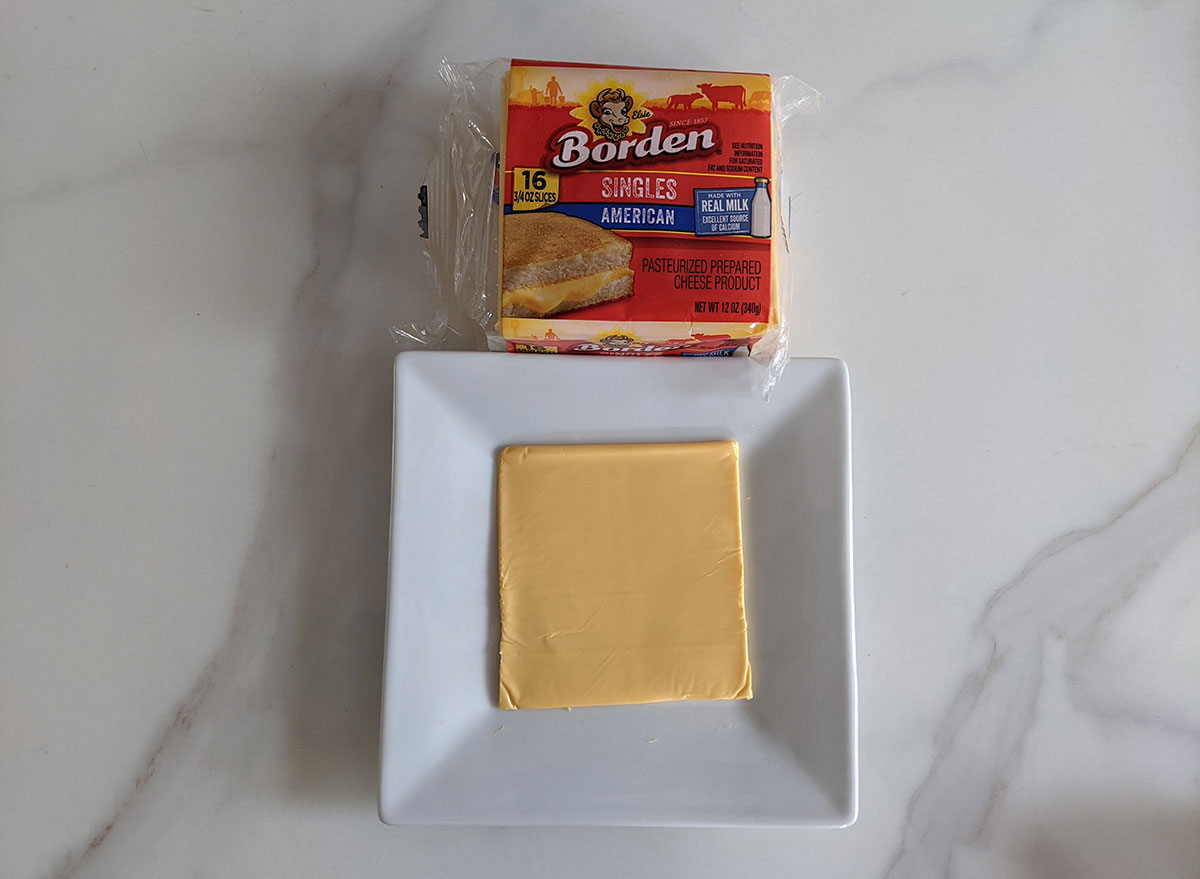
With each single proudly stamped “Farmer-owned” by a national dairy cooperative 13,000 strong and “America’s Favorite Cheese” emblazoned across its outer wrapper, you’d never guess that this solid, pre-Civil War brand was vulnerable to bankruptcy. Unfortunately, it filed for Chapter 11 last year hot on the heels of the largest milk producer in the country, Dean Foods, doing the same, as both were disrupted by the non-dairy trend. So for 150-year-old Elsie the cow’s sake, I hoped America wasn’t wrong about their American.
At first bite, it seems that the mascot has been taking too many cues from her partner Elmer from the chemical division (yep, the one on the glue bottles as the brand mythology goes!), since the soft single felt slightly plasticine when consumed cold. It was cool to the tongue and stayed that way, even as the others wilted and warmed to room temperature. It’s slightly sweet and mild, but loses its flavor halfway through the bite, ending on a slightly oily note.
Surprisingly, this was the most reluctant to melt—even more so than the much denser Horizon Organic. It needed the extra help of the microwave, which made the lower layer in contact with the broccoli melt but created a “skin” at the surface. In between the two, it puffed up, the extra air making it susceptible to quick cooling. Where it was flat was in the flavor, with not a lot of character or even milkiness.
Velveeta Slices: Original
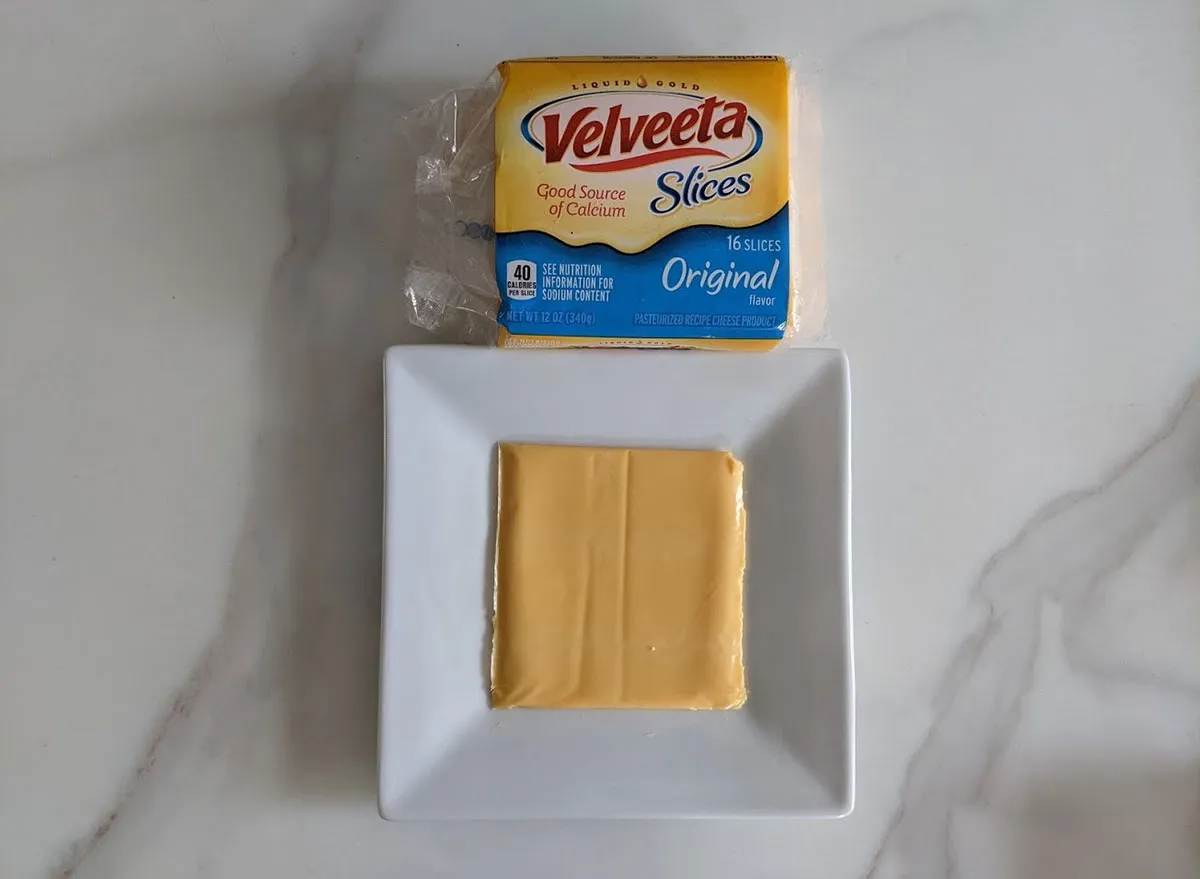
First introduced in 1978, this pioneer for the use of sodium citrate in processed cheese foods (to make casein proteins more soluble and heat-resistant) and famous super-melter trademarked as Liquid Gold had a lot to live up to. Velveeta is so beloved that honestly, no one even cares that it has more lactose than other American cheeses, and triggered a melodramatically dubbed Cheesepocalypse kerfuffle over the brief 2014 shortage during football season.
Out of its plastic wrap, the cheese started wilting right away—not unexpected given its sole purpose for existence. The mildest of all of the cheeses tested, it was also the sweetest. Even in its solid form, it coated the mouth well, with a flavor that didn’t get richer even as the sugars opened up. On the broccoli, it started melting the soonest, but surprisingly, also stayed more solid, becoming gloopy and thick instead of liquefying. It retained its sweetness as it melted down, but all other flavor was fleeting, which made us feel like we wanted more cheese.
But at a lower calorie count than the others, well, why not? Glop it on!
Looking for more helpful tips? Your ultimate restaurant and supermarket survival guide is here!
Kraft Deli Deluxe American 2%
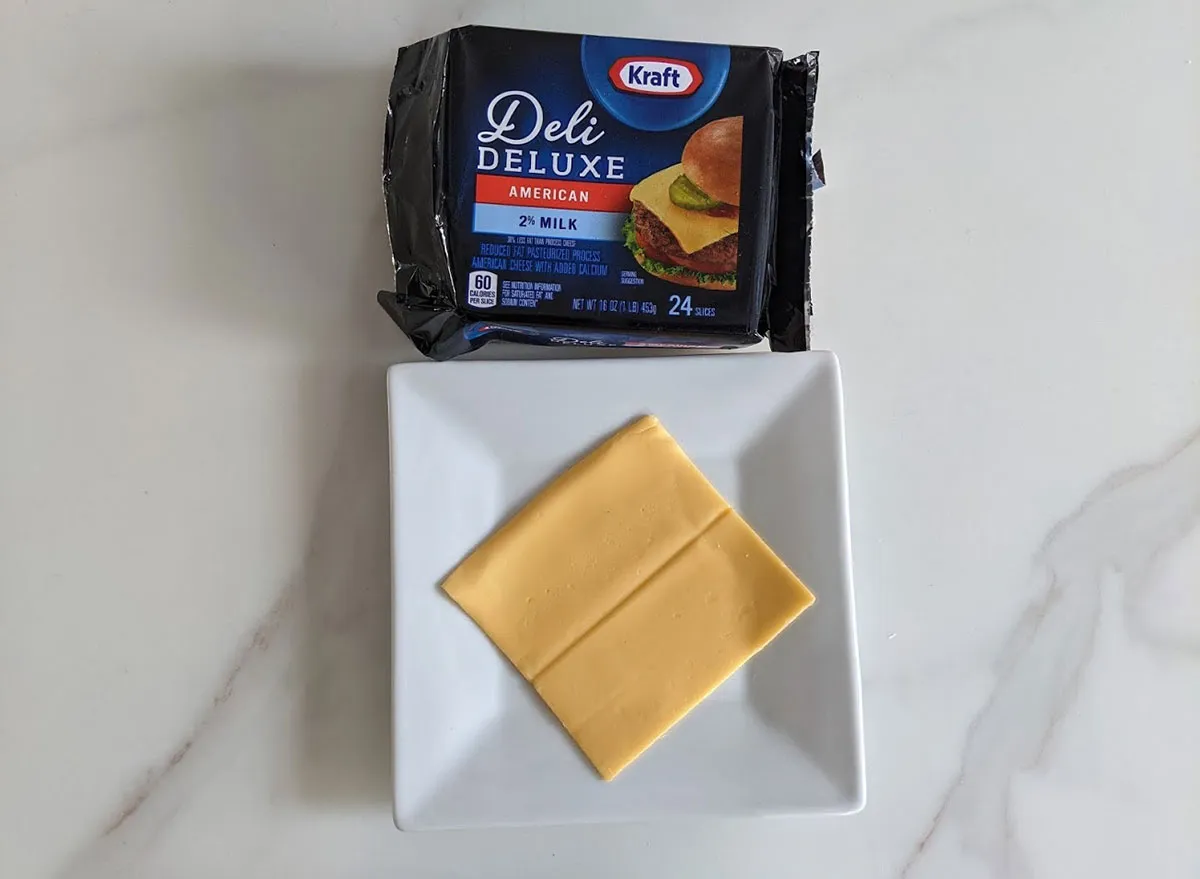
The only true American cheese in the batch, on par with what you’d get from the deli counter. Its use of 2% milk puts it on a more even footing with the rest of the regular cheese food products. Packaged like a fancy single on the outside, it proved itself to be a regular Eliza Dolittle on the inside, as the un-resealable wrapper revealed annoyingly smushed-together slices with nothing to separate them. This basically defeats the purpose of buying sit-in-your-fridge-forever cheese.
Nonetheless, it found redemption a few chews in. After a few seconds of nothing, a mild cheddar-like sharpness emerges as it warms up in your mouth, leaving you with a rich, salty aftertaste that lingers comfortably. With heat, it melted well naturally—faster than Velveeta, actually, and second only to the original Kraft Single. In fact, it almost disappears when left to melt by itself. This was unexpected since cheese is supposed to stay solid longer than cheese food by theory of composition alone. Because it melted so quickly, though, microwaving it creates a skin, similar to the Borden.
Kraft American Singles
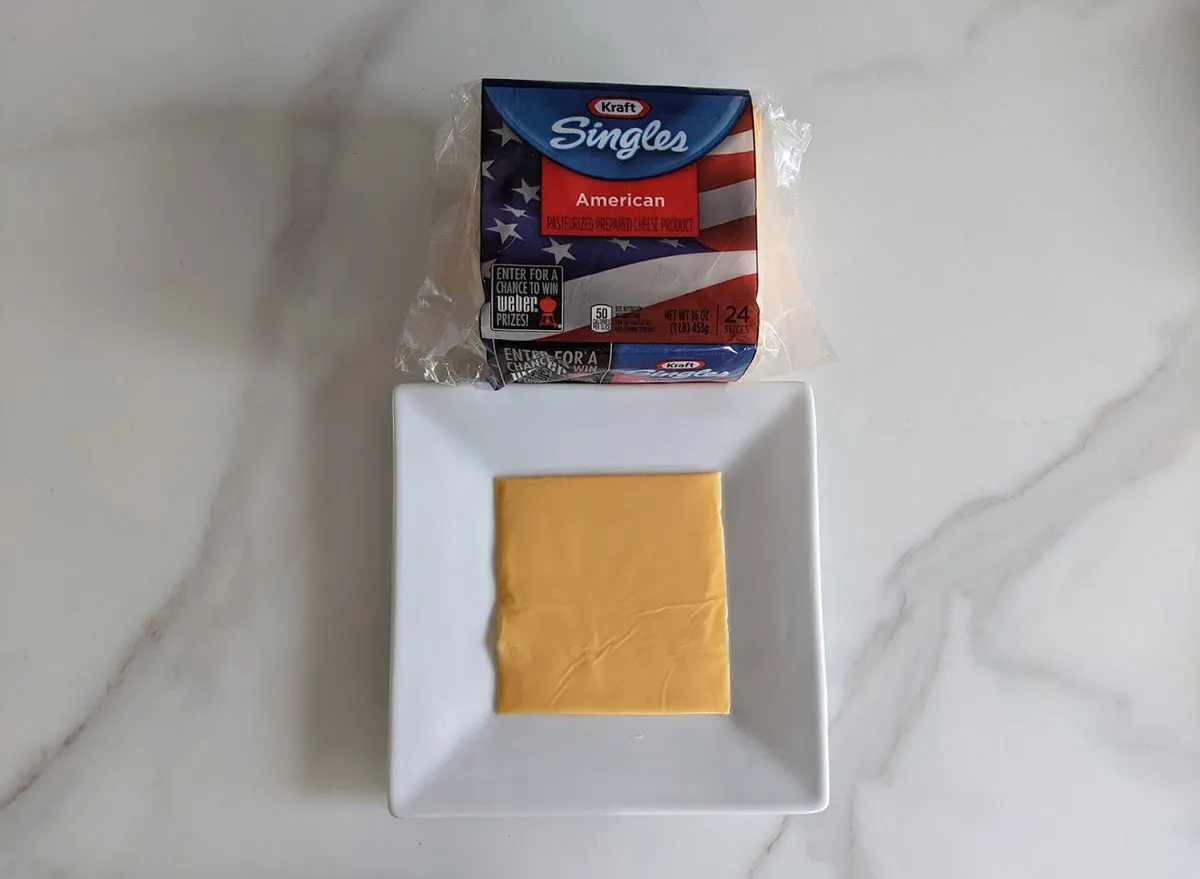
The American cheese that started it all, made by a Swiss practice patented by Canadian-American James Kraft in 1916, is a single with a century of stories to tell. In 1992, this brand got in trouble for its famous ad campaign stating that each slice contained five ounces of milk, which called attention to vegetable oil imitators as not cheese. Ironically, this only further substantiated the unfortunate reputation American cheese presently still carries, as shown in its flat sales as of 2019, and only 40% share of the market as competitors edge it out. But still, Statista research shows that as of last fall, this number still translates to 30.45 million Americans who use a pound or more of it each week, and this taste test clearly demonstrates why.
The minute you sink your teeth into this very solid bite, the cheese melts and coats the mouth in creaminess. There’s a slow build of richness with a full-bodied saltiness that’s just very satisfying with a full feel. It has the strongest, most distinctive flavor with a slight sharpness, and the most character, leaving a savory, lingering taste that brings nostalgic pleasure.
This cheese melted the fastest on its own for near-instant gratification, losing some of its flavor in the melting, but retaining the aftertaste. When microwaved, it does, unfortunately, turn into a thin cheese skin since it’s already so broken down on first contact with heat, and it is the most watery, If you don’t mess with it, though, it’ll stretch and ooze nicely without becoming totally liquefied.
I came into this taste test expecting the cheese products to be more or less the same, but cold, Kraft American Singles takes it by a landslide for sheer flavor alone. As for melting, these slices are the most immediate, which is what you want in a burger hot off a grill and in between bread that then won’t get a chance to burn on the griddle. Kraft American Singles will thin out under this kind of extended heating, which is its only weak point, but we’re not testing melt-and-wait—we want to melt and eat.
My solution, though? Mix and match for your own bespoke blend. After all, that’s the core of American processed cheese food anyway—a combination of soft, melting cheeses with different characteristics all cleverly designed to feel good in your mouth. My go-to as of this taste test will now be Kraft American Singles for its more pronounced flavor and body with a slice of Velveeta for added textural oomph. What’s yours?
Check out more exclusive taste tests:
We Tasted 6 Potato Chip Brands & This Is the Best!

